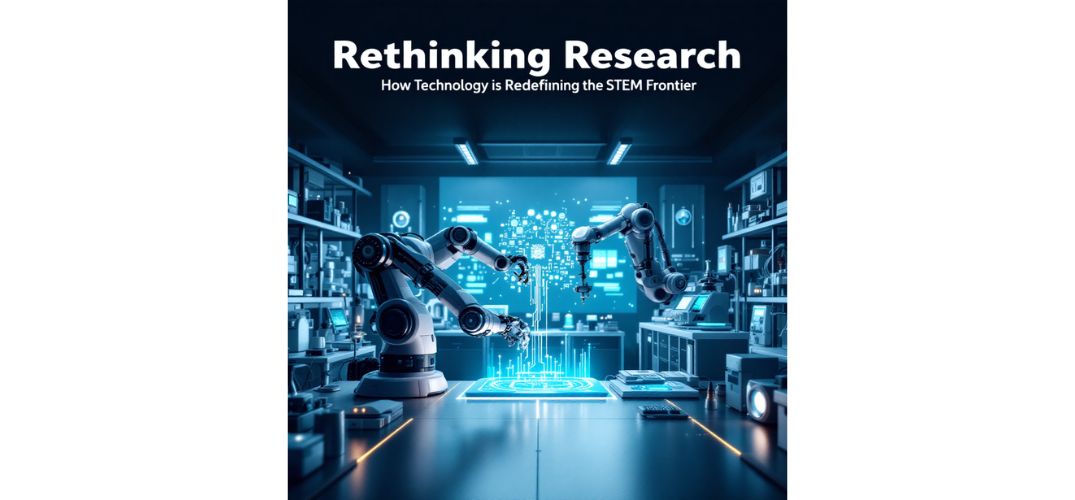Technology is revolutionizing how academic research is conducted in STEM disciplines across the United States. With tools like artificial intelligence, cloud computing, and virtual collaboration platforms, scientific discovery is becoming more dynamic, inclusive, and far-reaching. These digital innovations are reshaping how researchers generate, analyze, and share knowledge. In this article, Ravinderjeet Dhillon explores how these technological shifts are transforming research methodologies, collaboration, and accessibility within the evolving scientific landscape. The pace of change highlights the urgent need for adaptability across the entire academic ecosystem.
A New Era of Scientific Inquiry
The academic research ecosystem in STEM is experiencing a foundational shift. The convergence of digital technologies with scientific inquiry has introduced processes that are faster and fundamentally different. This transformation allows researchers to ask bigger questions and approach them with broader, more powerful toolsets. Today’s research thrives on global connectivity and algorithmic insight. This shift brings opportunities, but also raises questions around ethics, equity, and long-term impact.
The Computational Backbone of Modern Research
Cloud computing has eliminated traditional bottlenecks, enabling researchers to process massive datasets. Processing times have dropped by up to 78%, and infrastructure costs have declined sharply. These efficiencies are especially crucial in fields like genomics, climate science, and bioinformatics, where real-time analysis is increasingly necessary. This accessibility has shifted research from hypothesis-driven to data-driven methods, where patterns emerge from petabytes of data revealing insights previously out of reach.
The Rise of Intelligent Discovery
AI is now central to research. Machine learning models outperform humans in pattern detection, achieving over 90% accuracy in key tasks. Its predictive capabilities allow researchers to explore experimental possibilities with greater confidence and reduced trial-and-error. AI systems also suggest novel research directions by detecting hidden connections in complex datasets, increasing publication output and reducing resource consumption.
Open Access: Leveling the Playing Field
Open-access publishing has transformed knowledge sharing. These publications receive significantly more citations, especially in interdisciplinary research. By breaking down paywalls, these platforms have accelerated the global exchange of scientific insights. Researchers at smaller institutions report improved access to resources, enabling deeper and faster engagement with emerging ideas. Preprint servers now reduce the time between research completion and public availability to just weeks.
Beyond the Lab: Collaboration Without Borders
Digital platforms have expanded research networks globally. Over 85% of major institutions now use virtual collaboration tools, enabling more efficient and far-reaching research partnerships.
These tools allow real-time co-creation of knowledge and foster consistent engagement across continents. Multidisciplinary teams are now more common, producing higher-impact work supported by shared tools and synchronized methodologies.
Bridging Gaps, Opening Doors
Technology has reduced entry barriers for under-resourced researchers and institutions. Cloud-based tools and online training have enabled broader participation in high-level research.
This broader access is reshaping who gets to participate in frontier science and how that science is conducted. Assistive technologies also support disabled researchers, while virtual environments create inclusive spaces for diverse teams.
Ethics in the Age of Automation
Widespread data collection and algorithm use bring ethical challenges. Concerns about privacy and algorithmic bias require proactive governance.
Ensuring ethical integrity must become an embedded practice rather than a retrospective correction. Inclusive design and transparency are vital in mitigating unintended consequences. Emerging technologies like quantum computing and AR/VR show promise but must be made accessible to avoid deepening disparities.
Looking Ahead: A Technological Vision for Research
STEM research is becoming increasingly immersive and AI-driven. By 2035, AI is expected to influence nearly half of major scientific discoveries. The research lifecycle is poised to be faster, more collaborative, and driven by predictive technologies. To leverage these advances, institutions must invest in infrastructure, training, and equitable access. Those that do will see improvements in output and broader societal relevance.
In conclusion, Scientific practice across STEM has been transformed by technology, reshaping how research is conducted and shared. While access and capabilities have improved, disparities and ethical challenges remain. The future of academic research will depend on balancing technical innovation with thoughtful inclusion. In this transformative journey, Ravinderjeet Dhillon reminds us that while technology may change how we do science, it is our values that will shape what that science means.





























